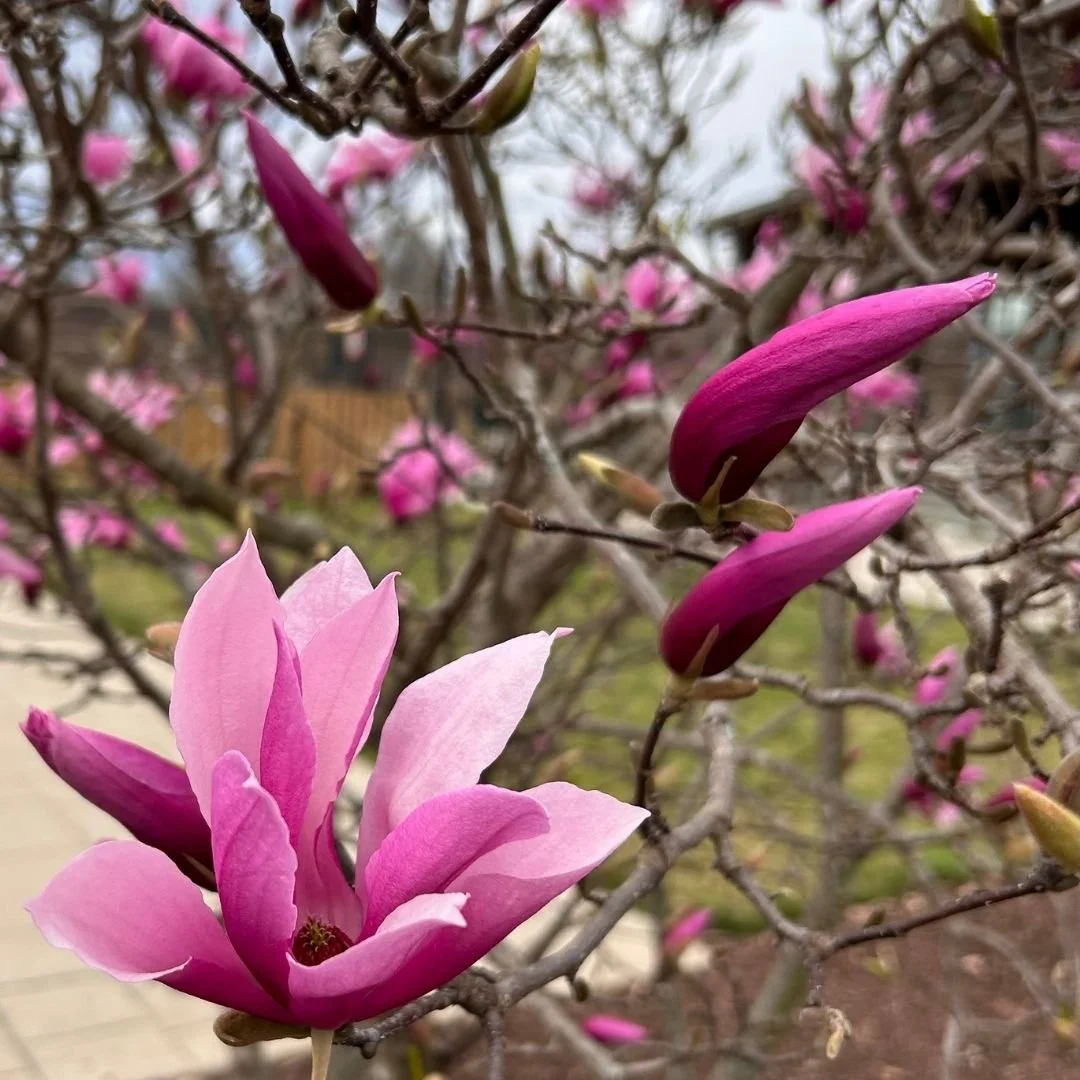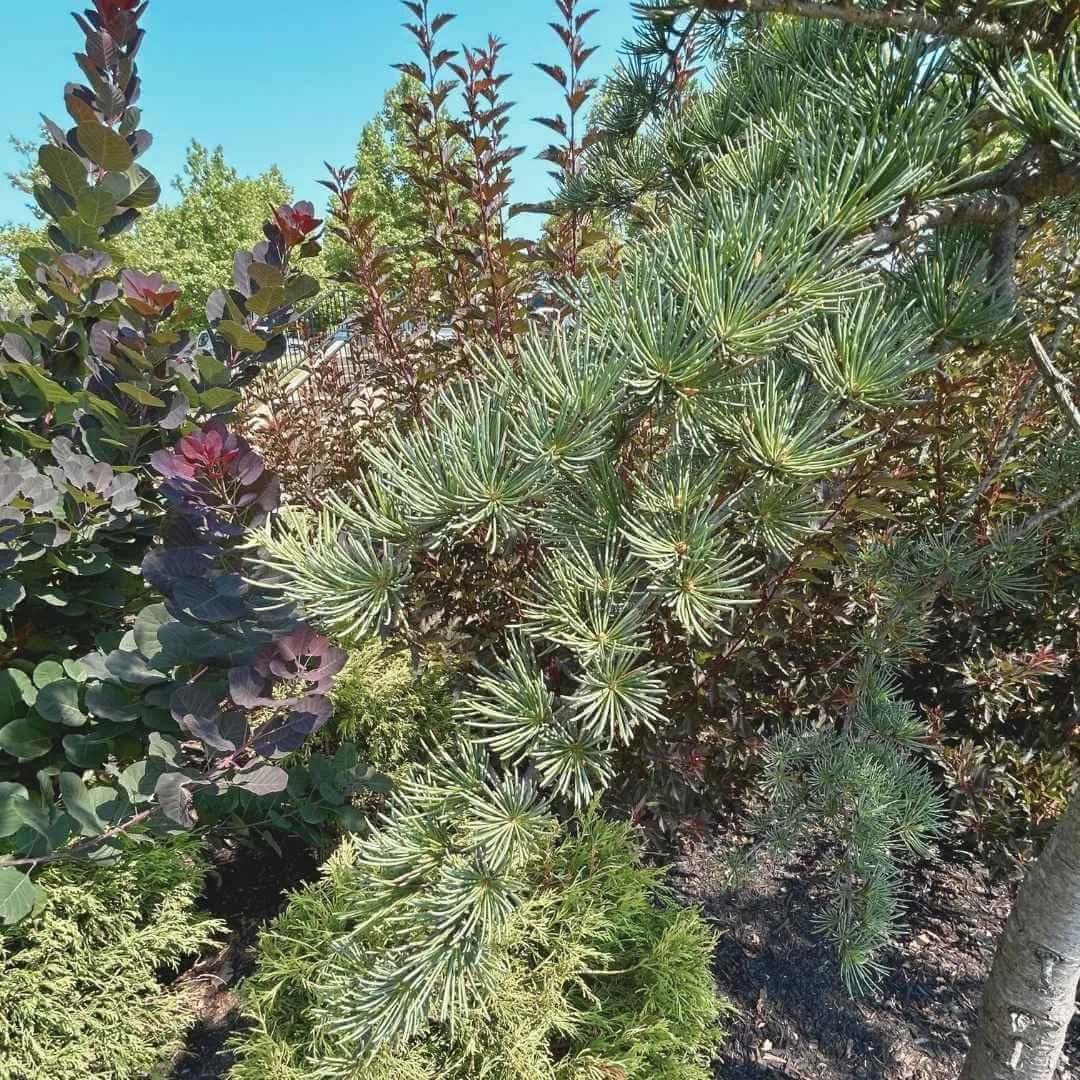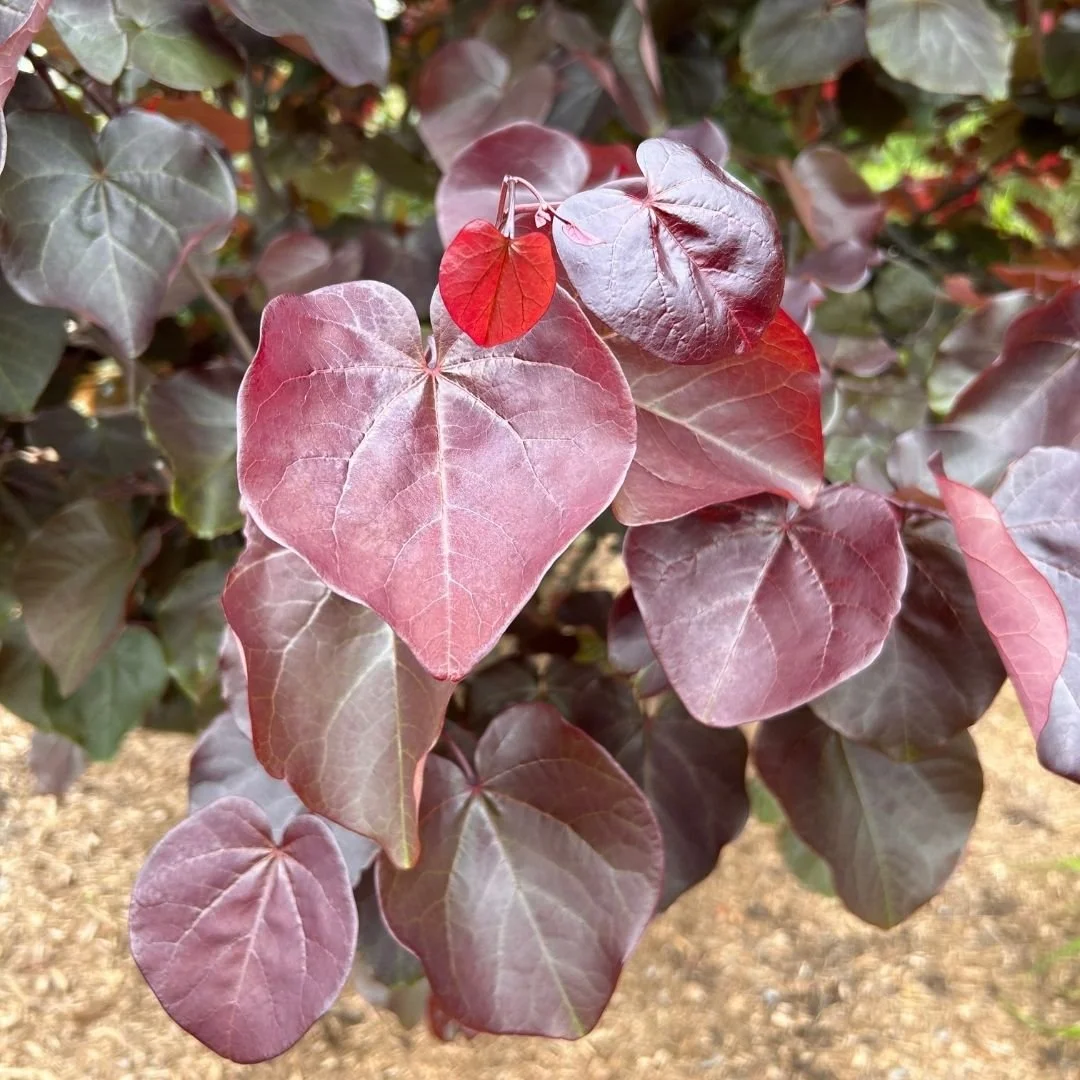10 Graceful and Elegant Crepe Myrtle Alternatives
Does Your Tree Have Sticky Leaves, Black Bark and Crepe Myrtle Bark Scale?
It may be time to consider crepe myrtle removal. This article showcases ten beautiful and graceful trees that are perfect alternatives to replace a crepe myrtle tree.
Crepe myrtle vs. crape myrtle? Either spelling is correct!
The elegant Crepe Myrtle tree (Lagerstroemia species) is cherished for its vibrant summer blooms, graceful form, and striking bark, making it a favorite in many landscapes.
If you've recently been forced to cut down your beloved tree due to the invasive crepe myrtle bark scale, you may be feeling heartbroken. Take heart, though, as there are many alternative trees with similar attributes that are not susceptible to scale.
For those trying to figure out if your tree has crepe myrtle bark scale, keep scrolling for expert tips on spotting the signs of infestation and what your next steps should be.
Don’t forget - spring and fall are the best times to plant a new tree, before the onset of extreme hot or cold weather. All newly planted trees need increased watering for the first two years after planting, and may need supplemental watering during periods of drought. Check to make sure you are selecting an appropriate tree for your USDA gardening zone.
Let’s dive into ten different ideas for crepe myrtle alternatives. Each one shares similar characteristics with the beloved crepe myrtle tree, and will provide elegance and beauty in gardens and landscapes for years to come.
Snowdance™ Japanese Tree Lilac
Syringa reticulata ‘Bailnce’
Snowdance™ Japanese Tree Lilac. Photo courtesy of Bailey Nurseries - baileynurseries.com
The Snowdance™ Japanese tree lilac is a small, vase-shaped tree with a spreading crown. Unlike many other tree lilacs that bloom every other year, Snowdance™ flowers annually from late spring into early summer.
It has fragrant, creamy-white flowers that contrast beautifully with glossy, dark green leaves. This pest and disease resistant tree grows in zones 3-7 and reaches a mature size of 18 feet tall and 20 feet wide.
Crepe myrtle vs. lilac: Both have showy flowers and attractive dark green leaves. Snowdance™ is a great replacement for the Natchez crepe myrtle - they are similar in size, shape, and flower color. Crepe myrtles turn orange and red in autumn, while tree lilacs turn shades of coppery brown.
The Snowdance™ Japanese tree lilac has large, fragrant flowers. Image courtesy of Bailey Nurseries.
2. Pink Snow Showers™ Weeping Cherry
Prunus x ‘Pisnshzam’
Pink Snow Showers™ is a graceful weeping cherry tree known for its exquisite clusters of delicate pink flowers in early spring, adding a touch of elegance to any garden or landscape.
It has clean, disease-resistant dark green leaves that turn vibrant shades of orange and red in autumn, and glossy cinnamon-colored bark striped with prominent lenticels. Pink Snow Showers™ grows up to 35 feet tall and 25-30 feet wide in zones 4-8.
Crepe myrtle vs. cherry: Both trees have attractive bark and vibrant fall color. Cherry trees flower earlier and require consistent moisture, unlike the drought resistant and summer-flowering crepe myrtle.
Pink Snow Showers™ Weeping Cherry Tree. Photo courtesy of Proven Winners - provenwinners.com
3. Magnolia Jane
Magnolia x ‘Jane’
Magnolia Jane
Magnolia Jane is part of the “Little Girl” series of magnolias, a group of small deciduous trees developed to resist frost damage and flower reliably each spring.
Deep purple, tulip-like flowers emerge in mid-spring before the tree leafs out, with periods of rebloom possible throughout the summertime.
This cold-hardy, low-maintenance tree is easy to grow, staying under 15 feet tall and 10 feet wide in zones 4-8. Magnolia Jane is approximately the same size as the ‘Tonto’ and ‘Tuscarora’ crepe myrtle trees.
Crepe myrtle vs. magnolia: Both are multi-stemmed trees with colorful flowers. Flowering times differ, with Magnolia Jane blooming months earlier, and while most crepe myrtles turn shades of orange and red in fall, the leaves of Magnolia Jane turn a golden yellow hue.
The tulip-like spring flowers of Magnolia Jane.
4. White Fringetree
Chionanthus virginicus
The white fringetree is a great choice for those in zones 4-9 looking to replace their crepe myrtle with a native tree. The straight species of the white fringetree (Chionanthus virginicus) grows naturally along the streams and moist woodlands of the Eastern United States, with white fringe-like flowers blooming in late spring and inspiring the nickname “Old Man’s Beard”.
This slow-growing tree ultimately reaches 12-20 feet tall and wide and offers plenty of wildlife value by attracting pollinators, feeding the birds, and serving as a host plant for caterpillars. Read more about the white fringetree here.
Crepe myrtle vs. fringetree: Both trees have beautiful flowers and are a favorite of bees and pollinators. Their native range differs - the white fringetree originates from the Eastern United States, while the first crepe myrtle trees were brought to North America from Asia in the 1700s.
White Fringetree
5. Summer Gold Kousa Dogwood
Cornus kousa ‘Summer Gold’
Summer Gold Kousa Dogwood. Photo courtesy of PlantHaven International - planthaven.com
If you are looking for a unique specimen tree to replace your crepe myrtle, consider planting a Summer Gold kousa dogwood. This small, fast-growing dogwood tree has a distinct, upright form and a narrow, slender silhouette that broadens with age.
In springtime, creamy white bracts resembling flowers emerge against a backdrop of variegated green and yellow foliage. The foliage color continues to change, turning to soft pink in summer and blazing red in autumn.
The Summer Gold kousa dogwood is a great replacement for smaller crepe myrtles like ‘Acoma’ and the ‘Magic’ series. It grows up to 8 feet high and 4 feet wide in zones 4-9.
Crepe myrtle vs. dogwood: Both types of trees are stunning, eye-catching specimens and make a lovely focal point in the landscape. The Summer Gold kousa dogwood prefers cool, moist soil and filtered to partial sun while crepe myrtles can handle heat, full sun, and periods of drought.
The leaves of Summer Gold Kousa turn red in fall. Image courtesy of Planthaven International.
6. Appalachian Red Redbud
Cercis canadensis ‘Appalachian Red’
The Appalachian Red redbud tree is another native option for replacing a crepe myrtle. It’s a naturally occurring sport of the Eastern redbud that was originally discovered growing wild along a Maryland roadside.
Appalachian Red has a graceful spreading shape that maxes out at 20 feet high and wide. Its vibrant, neon pink spring blooms rival the intensity of the ‘Pink Velour’ and ‘Dynamite’ crepe myrtle varieties.
The heart-shaped green leaves of this dynamic redbud turn yellow in autumn. Read more about the Appalachian Red redbud tree here.
Crepe myrtle vs. redbud: Both trees have vibrant flower colors and a graceful habit. Flowering time and fall color differs - redbuds flower in spring, before the tree leafs out, while crepe myrtles bloom during the summertime. Crepe myrtles turn vibrant shades of red and orange in the fall and redbuds have yellow autumn foliage.
Appalachian Red Redbud
7. Temple of Bloom® Seven-Son Flower
Heptacodium miconioides 'SMNHMRF'
Temple of Bloom® Seven-Son Flower. Photo courtesy of Proven Winners - provenwinners.com
Squint and you won’t notice much of a difference between Temple of Bloom® seven-son flower and a ‘Natchez’ or ‘Acoma’ crepe myrtle. Temple of Bloom® flowers at the end of summer, providing an essential nectar source for bees at a time when little else is blooming in the landscape (and the bees can’t get enough!).
White flowers give way to vivid red bracts, changing the look of this small tree in autumn. Temple of Bloom® grows 15-20 feet wide and 6-10 feet tall in zones 5-9.
Crepe myrtle vs. seven-son flower: Both have dark green foliage, a summer bloom time, an elegant multi-stemmed habit, and beautiful peeling bark. Seven-son flower is the hands down pollinator favorite!
In autumn, vivid red bracts completely change the look of this tree! Photo courtesy of Proven Winners - provenwinners.com
8. First Editions® Gladiator™ Crabapple
Malus x adstringens ‘Durleo’
The Gladiator™ flowering crabapple tree has an upright, narrow form, making it ideal for planting among the mature shrubs and perennials of an existing garden bed. Bright pink spring flowers are followed by bronze-purple leaves and small fruits, attracting scores of pollinators and birds.
This crabapple tree turns red in the fall, and brings winter interest to the landscape with its unique knobby bark. The Gladiator™ flowering crabapple grows up to 20 feet tall and 9 feet wide in zones 2-9.
Crepe myrtle vs. crabapple: Both types of tree have bright flowers, stunning fall color and beautiful bark. Crepe myrtles have a spreading, vase-like shape and are frequently multi-stemmed, while Gladiator™ has a single trunk and grows tall and narrow.
First Editions® Gladiator™ Flowering Crabapple. Photo courtesy of Bailey Nurseries - baileynurseries.com
9. Weeping Blue Atlas Cedar
Cedrus atlantica ‘Glauca Pendula’
Weeping Blue Atlas Cedar
If you’ve removed a crepe myrtle and would like to try something a little different, the weeping blue atlas cedar is an evergreen specimen tree with silvery blue needles and a horizontal branching habit.
This slow growing tree has graceful downward drooping branches that can be trained to grow in a serpentine pattern.
It makes a great replacement for any small, single-stemmed crepe myrtle like ‘Pink Velour’ or ‘Berry Dazzle’, and looks best when surrounded by low shrubs or perennials. The weeping blue atlas cedar grows 3-12 feet tall and wide in zones 6-9.
Crepe myrtle vs. cedar: The Blue Atlas cedar is evergreen and keeps its needles on all year long, providing year-round interest in the garden. Crepe myrtles are deciduous and lose all their leaves in autumn, going dormant until spring.
Blue Atlas Cedar needles stay green year-round.
10. Merlot Redbud
Cercis ‘Merlot’
Merlot Redbud
The Merlot redbud is a small, round, heat-resistant tree for zones 6-9. It makes a wonderful replacement for a dwarf crepe myrtle bush or tree like Center Stage® Red or ‘Hopi’.
This charming dwarf variety has bright lavender spring flowers followed by heart-shaped, leathery purple leaves. The Merlot redbud is ideal for small landscapes and gardens - read more here.
Crepe myrtle vs. Merlot redbud: Both can handle the heat and humidity of zones 6-9. Flowering time and form differs - the Merlot redbud flowers in spring and has a low branching habit and a dense, round shape; crepe myrtles flower in summer and have an upright, spreading vase shape.
The Merlot redbud tree has heart-shaped, deep red leaves.
What is Crepe Myrtle Bark Scale?
If you have landed on this page, you may be looking for a way to treat a tree infested with crepe myrtle bark scale. If you haven't contacted a certified arborist yet, do so right away - don’t delay!
When the tree is in the early stages of infestation, an arborist may be able to treat and save the tree. Make sure your tree care professional is certified by the International Society of Arborists - you can check their credentials by using this handy online tool.
So what, exactly, is crepe myrtle bark scale? Crepe myrtle bark scale is a type of insect pest known scientifically as Acanthococcus lagerstroemiae. It primarily infests crepe myrtle trees, causing damage that can significantly affect the appearance of the plants.
These scale insects are small, white, and cottony in appearance. They attach themselves to the bark of the tree, where they feed on tree sap and excrete a sticky substance called honeydew.
This sticky honeydew attracts other insects and fosters the growth of black sooty mold, an unsightly fungal disease that can potentially interfere with the tree's ability to photosynthesize.
Crepe myrtle bark scale in Washington DC, Maryland, Virginia, North Carolina and the Southeastern United States is becoming a growing concern for gardeners and landscapers.
Since 2004 the pest has been slowly spreading throughout these areas, posing a threat to the popular and beloved crepe myrtle tree.
Telltale signs of a crepe myrtle bark scale infestation are fuzzy white insects clustering on stems and branches, and a sticky, black, powdery substance covering pretty much everything on and underneath the tree canopy including leaves, bark, mulch, fencing, patios, and patio furniture.
Crepe myrtle bark scale can potentially spread to nearby boxwoods, beautyberry, figs, privet, pomegranate and persimmon trees as well.
It’s important to note that crepe myrtle bark scale does not kill the crepe myrtle tree. It does, however, render the tree extremely unattractive and aesthetically unappealing, with blackened limbs, stunted growth, and diminished flowering.
Crepe myrtle bark scale will not go away without treatment. If you want to try and save your tree, it’s important to seek help from a certified arborist immediately, as soon as you notice problems.
Some homeowners decide their crepe myrtle tree has become too messy and unsightly, and opt to remove the tree and look for alternative, crepe myrtle-like plants (a list of ten beautiful crepe myrtle alternatives is outlined above!).
Read more about this growing problem on Clemson University’s Home & Garden Information Center.
















